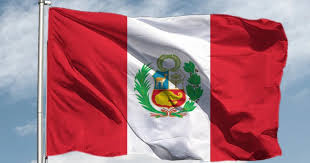
PULGA (California, US), July 16 (NNN-AGENCIES) — A California fire churned through unpopulated mountain wilderness on Thursday, but posed no immediate threat to the nearby town of Paradise, site of the deadliest wildfire in recent US history. Still, survivors of the 2018 blaze worried that history could repeat itself.
The Dixie Fire had burned 9 square kilometres of brush and timber near the Feather River Canyon area of Butte County northeast of Paradise and moved into national forest land in neighbouring Plumas County.
There was zero containment and officials kept in place a warning for residents of the tiny communities of Pulga and east Concow to be ready to leave.
In its early hours, the fire raced along steep and hard-to-reach terrain about 16 kilometres from Paradise, the foothill town that was virtually incinerated by the Camp Fire that killed 85 people. The current fire, which erupted in the rugged Feather River Valley northeast of Paradise, has not advanced toward the town, and residents have not been ordered to evacuate.
Because little of the foliage has grown back in the area since the 2018 Paradise blaze, there is nothing there now for the current fire to burn, Butte County Supervisor Bill Connelly said.
“It’s probably not a direct threat at this time,” he said. The blaze is one of nearly 70 active wildfires that have destroyed homes and burned through about 4,047 square kilometres – a combined area larger than Rhode Island – in a dozen mostly Western states, according to the National Interagency Fire Center.
In southern Oregon the Bootleg Fire, the largest wildfire currently burning in the US, covered more than 919 square kilometres early on Thursday after a day of extreme behavior and explosive growth. Twenty-one homes have been destroyed and another 1,900 remained threatened in the Fremont-Winema National Forest area just north of California that’s been gripped by a historic drought.
“This fire is going to continue to grow – the extremely dry vegetation and weather are not in our favour,” Joe Hessel, an incident commander, said in a statement.
The nearby Log Fire, which originated as three tiny fires on Monday, ballooned to more than 19 square kilometres as winds pushed the flames eastward through wilderness.
The National Weather Service tweeted late on Wednesday that a “terrifying” satellite image showed gigantic clouds fuelled by smoke and hot air had formed over the fire – a sign that the blaze was so intense it was creating its own weather, with erratic winds and the potential for fire-generated lightning.
“Please send positive thoughts and well wishes to the firefighters. … It’s a tough time for them right now,” the tweet read.
Extremely dry conditions and heat waves tied to climate change have swept the region, making wildfires harder to fight. Climate change has made the American West much warmer and drier in the past 30 years and will continue to make weather more extreme and wildfires more frequent and destructive.
An extreme heat wave late last month sucked vegetation dry in the Pacific Northwest, where firefighters say they are facing conditions more typical of late summer or fall than early July. The Northwest Interagency Coordination Center moved the region up to the highest alert level Wednesday as dry gusts were expected in some areas and new fires popped up.
In California, the state’s largest fire so far this year grew to 404 square kilometres north of Lake Tahoe near the Nevada state line.
The Beckwourth Complex, a merging of two lightning-caused blazes, was 68 per cent contained but new evacuations were ordered on the north side as winds carried embers ahead of the fire, Plumas National Forest officials said Thursday morning.
The fire “has been creating its own independent weather patterns as the day progresses,” a statement said.
A wildfire threatening more than 1,500 homes near Wenatchee, Washington, grew to 36 square kilometres by Thursday morning and was about 10 per cent contained, the Washington state Department of Natural Resources said.
About 200 firefighters were battling the Red Apple Fire near the north-central Washington city renowned for its apples. The fire was also threatening apple orchards and an electrical substation, but no structures have been lost, officials said. — NNN-AGENCIES




